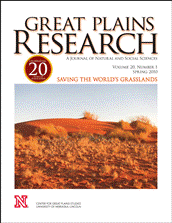Center for Great Plains Studies

Great Plains Research: A Journal of Natural and Social Sciences (through 2013)
Date of this Version
Fall 2004
Document Type
Article
Abstract
Fine-Dare tells the story of the American Indian movement to recover human remains and cultural objects taken from them by non-Indians for the purposes of study, display, and profit from the viewpoint of an anthropologist supportive of Indian issues who wants her profession used in a more positive way regarding Native peoples. To her, the Native American Graves Protection and Repatriation Act (NAGPRA) is a means for understanding boarder historical currents invol ving the treatment of Indians, whether bad, good, or indifferent. She argues that relating this history is vital for fathoming the complexities of repatriation that began during the 1880s and continues to present times in both the United States and Canada. Fine-Dare also traces the development of federal and state laws related to Indian burial rights and repatriation. In discussing the impetuses behind non-Indian motives for the sacrilege, she examines the connection between the views of John Locke, Calvinists, Thomas Jefferson, Franz Boas, and others about the alleged superiority of Western society, along with their declarations proclaiming Native peoples' inferiority, and the rise of scientific enquiry and museums. Out of these intellectual processes grew a moral climate, supported by a power relationship and public sentiments, that sanctioned the practices of collecting, studying, and exhibiting Native remains and cultural items in museums through heinous means, including the decapitations of fallen warriors, grave looting, and theft.


Comments
Published in Great Plains Research Vol. 14, No. 2, 2004. Copyright © 2004 The Center for Great Plains Studies, University of Nebraska–Lincoln. Used by permission.